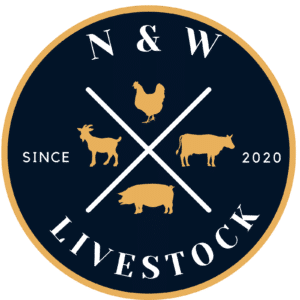Source: Calf Distinction.

Pneumonia is one of the most common diseases we see in dairy calves from birth to weaning. Diagnosing, treating and preventing pneumonia is very important for every dairy farm. Pneumonia is also a disease that you need to work very closely with your veterinarian for guidance. Bovine respiratory disease (BRD), also known as shipping fever or pneumonia, is a significant problem for dairy replacement heifers. According to reports from the National Animal Health Monitoring System (NAHMS), 18.1% of pre-weaned dairy heifers experienced respiratory disease (USDA 2012), but respiratory problems accounted for 22.5% of deaths in unweaned heifers and 46.5% in weaned heifers (USDA 2010). That means respiratory disease is the single greatest cause of heifer deaths after weaning.
Bacterial respiratory pathogens include Pasteurella multocida, Pasteurella hemolytica, Corynebacterium pyogenes, Mycoplasma dispar, and Hemophilus somnus.
Viral respiratory pathogens include Infectious Bovine Rhinotracheitis (IBR), Parainfluenza-3 virus (PI-3), Bovine Respiratory Syncitial Virus (BRSV), and Bovine Virus Diarrhea (BVD).
Signs of Pneumonia

Most calves that have pneumonia will have a fever (rectal temperature over 103F/39 C).

Rapid respiratory rate (often over 60 breaths per minute).

Look at the calf before disturbing it to see if it is breathing fast as this is a very sensitive indicator of pneumonia.

Listening to the lungs with a stethoscope can reveal increased or scratchy crackling breath sounds.

Coughing and nasal discharge is also a sign of pneumonia; however, this can also be a sign of poor ventilation and “stale” air.

A calf that is coughing without a fever or any change in respiratory rate may just need fresh air and not antibiotics!


The Respiratory System of Dairy Calves is very Vulnerable

Pneumonia is an infection that causes inflammation and damage to the calf’s lungs.

Commonly occurs around 4 or 5 weeks of age, it can also occur in younger and older calves.

Calf airways are relatively narrow, so they get easily blocked.

Calf lungs are heavily segmented, and each segment has only one entry point for the airways. If that entry point is blocked, the entire segment does not function any more.

The calf first increases mucus production which helps it to clear its airways. This is why calves often have a runny nose. If the calf fails to clear the airways this way, it is time to act.

Treatment success will depend upon early diagnosis and treatment.
Manage the Calf’s Environment

Humid, moist air, drafts, exposure to wet or chilling cold conditions, and sudden temperature swings are risk factors for pneumonia.

Build-up of ammonia and other gases in confinement housing irritate the calf’s respiratory tract, damaging its defense mechanisms against infection.

Other stressors that increase the calf’s risk for pneumonia include crowding, transportation, weaning, and exposure to infectious agents through the co-mingling of calves in group pens or by housing of calves with older animals.

Pneumonia is caused as much by poor environment and management as it is by exposure to infectious agents.

Calves with chronic pneumonia that are unresponsive to treatment frequently do not fully recover, have dramatically reduced rates of gain, and should not be kept for dairy herd replacements.


A One-Two Punch
(New York Calf Management Expert Sam Leadley)

“The first organ to respond to stress in bovines is the lung,” Leadley explains. “If scours and dehydration are stressing the animal, the lungs can get involved, too. That’s why we often see scours and pneumonia together.“

If too much energy is devoted to survival, calves don’t have the resources to grow,” notes Leadley. “Severe respiratory disease can also lead to permanent lung damage, leaving animals unthrifty.“

Zinc methionine supplementation reduces the severity of a combined viral-bacterial respiratory challenge in beef heifers.

Calves experimentally challenged with IBR virus tended to recover from the disease more rapidly when fed zinc methionine.

Morbidity rate tends to be lower for zinc methionine supplemented calves.



